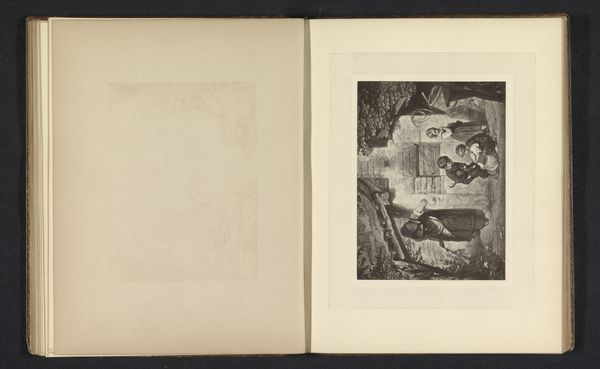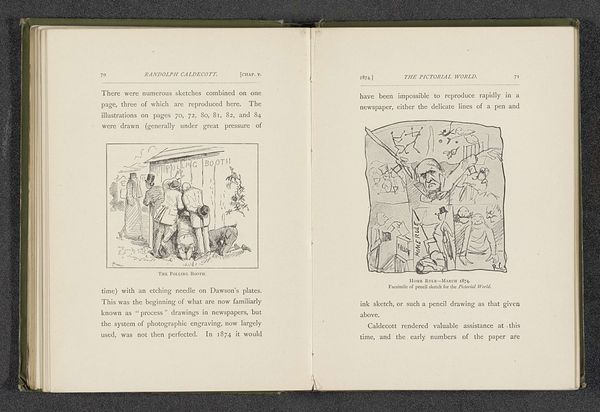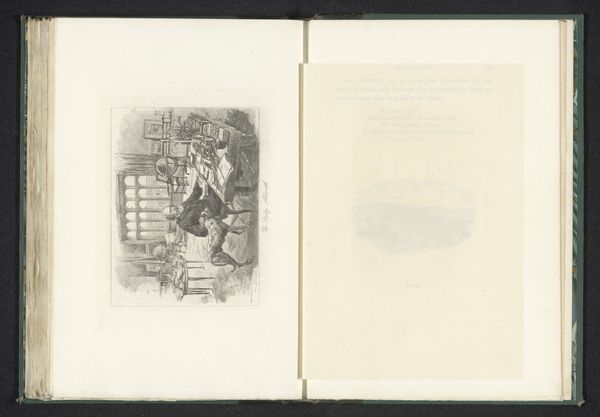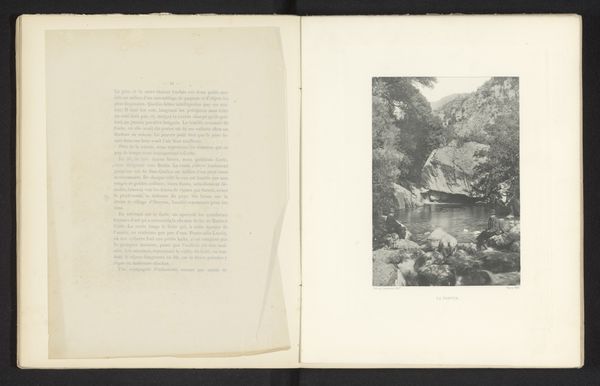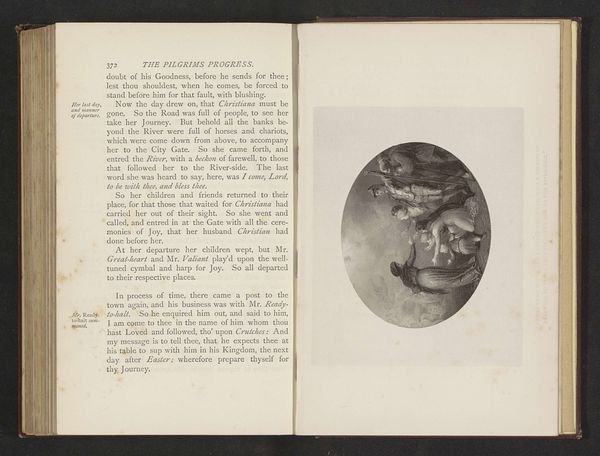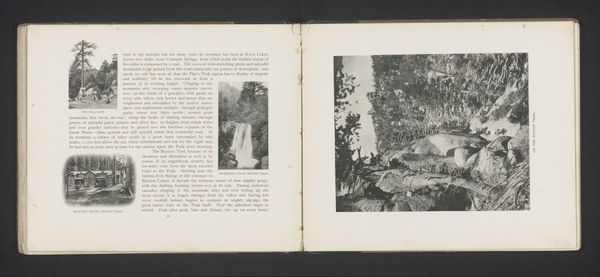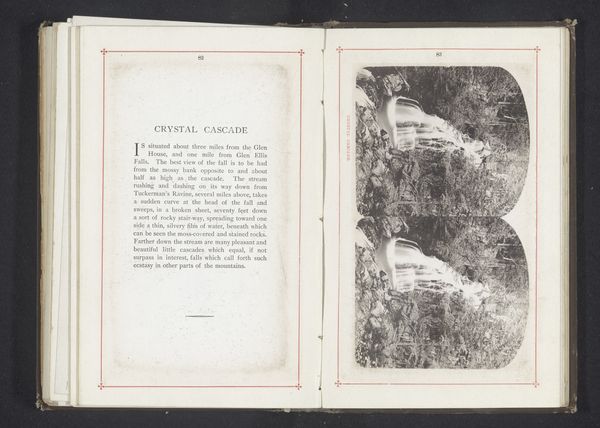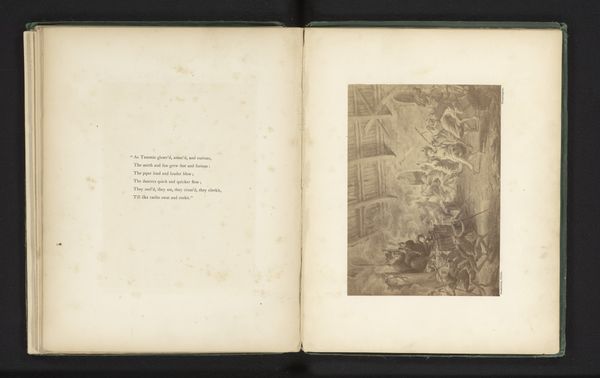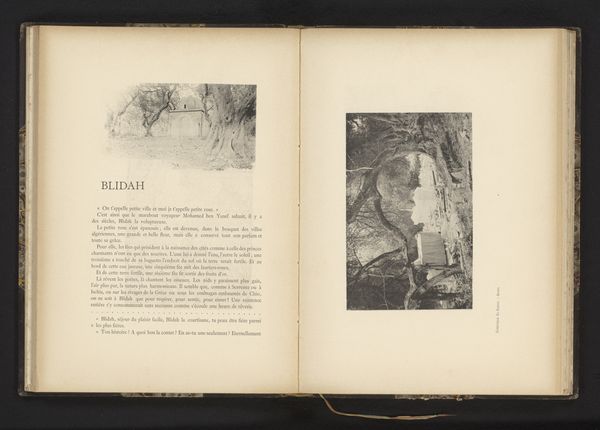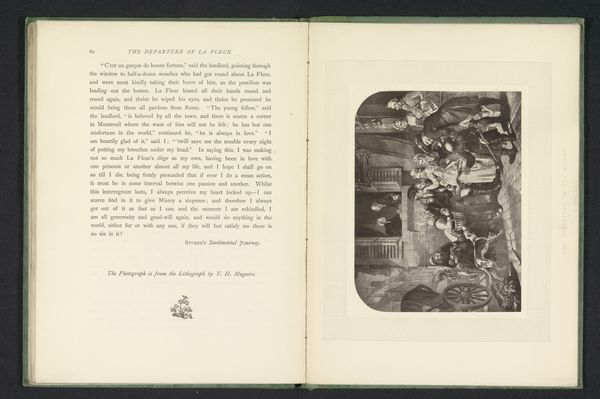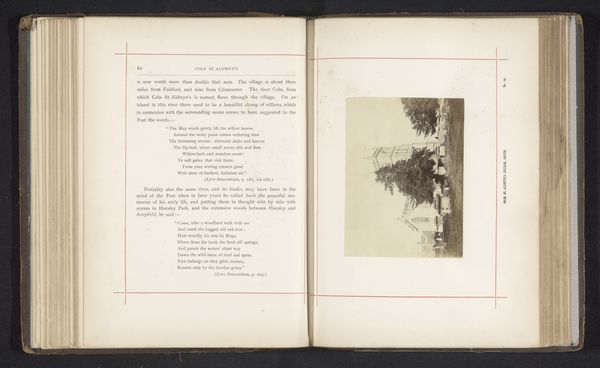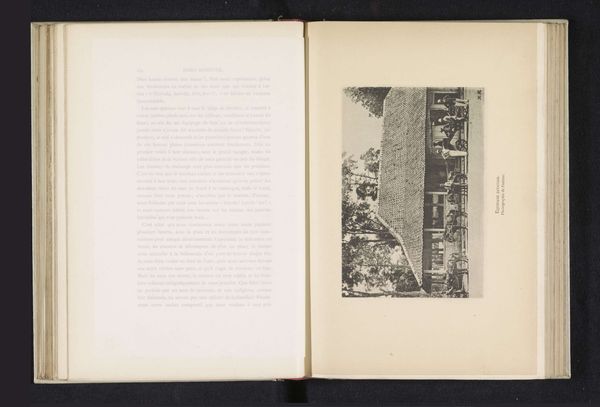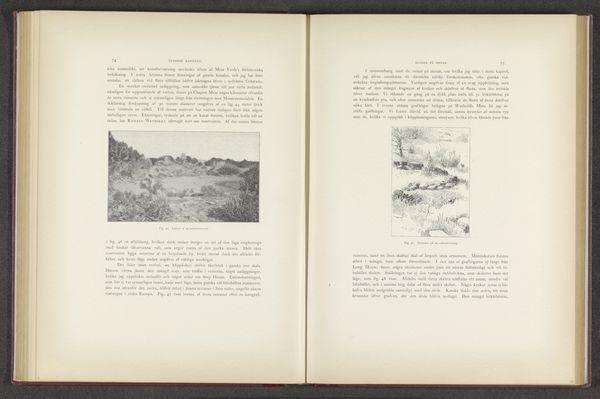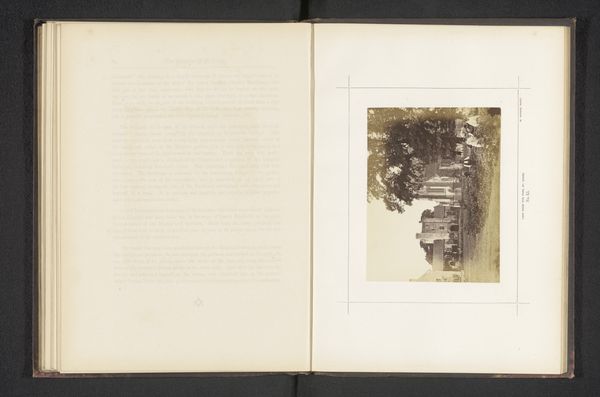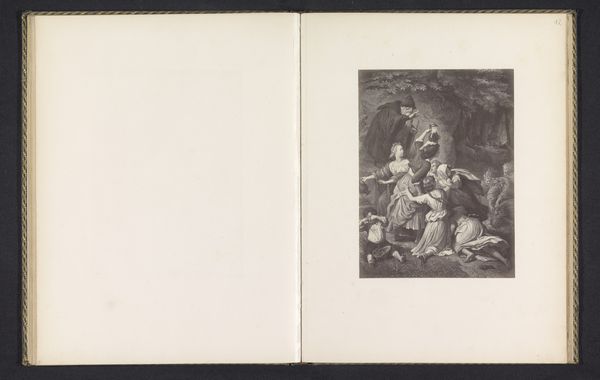
Dimensions: height 345 mm, width 430 mm
Copyright: Rijks Museum: Open Domain
This is a children's print of unknown date, by Harry Arnold, made using lithography with added color. Prints like this were a mainstay of popular culture in the 19th and early 20th century. Lithography allowed for relatively quick reproduction, meaning images could reach a wide audience at an affordable price. Look closely, and you can see the subtle texture of the lithographic stone. The colored portions were likely added by hand, a form of manual labor. The scenes depicted are idyllic—children playing, interacting with animals, and enjoying nature. These images reflect a particular vision of childhood, one that emphasizes innocence and leisure. But the very existence of such a print points to another reality: the industrialized world that made its production possible. In appreciating this kind of work, it is key to remember that no artwork exists outside the social and economic realities of its time. Even something as seemingly simple as a children's print carries within it the traces of labor, technology, and cultural values.
Comments
No comments
Be the first to comment and join the conversation on the ultimate creative platform.
